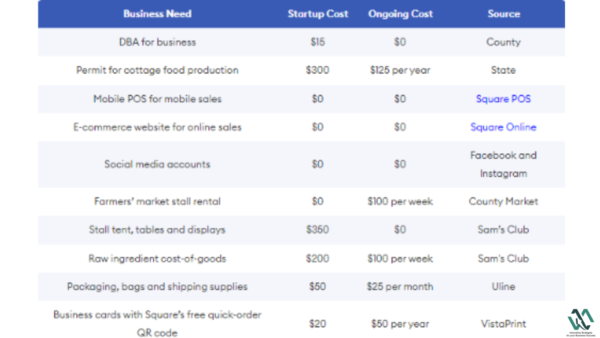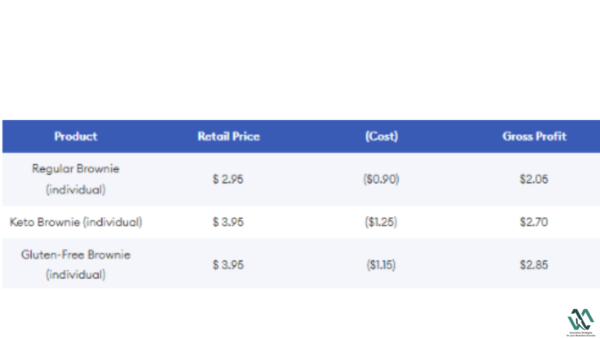Simple Business Plan Template (2023)
Business plans can take many forms and serve many purposes, but they all have one thing in common: they help you set goals and define how to reach them. Whether you’re starting a side gig, solo business, or small business, our simple business plan template covers everything you need to know. Following this step-by-step process may even help you uncover alternative solutions.
Here’s what we’ve got
Why You Need a Business Plan
You need to think about the costs and tasks involved in bringing a product or service to market, whether you’re a first-time entrepreneur or an old hand. During the process, you can also spot new income opportunities and find the most profitable business models.
Despite its importance, business planning doesn’t have to be stressful. For lean startups and solopreneurs, business plans are just an outline of the product or service, the sales proposition, and target customers. To get startup funding or a partnership, you’ll need a business plan that details market research, operating costs, and revenue forecasts.
Our simple business plan template will get you started, regardless of which startup category you fall into.
Take advantage of our free simple business plan template
Use our free simple business plan template to fill in the blanks as we go over each element. Don’t know where to start? You’ll also find some startup scenario examples below.
The 6 Steps to Writing an Effective Business Plan
Every business plan should cover the six key elements outlined in our free template and explained below, whether it’s a quick-launch overview or an investor pitch. It’s the market research and operational and financial details that make a small business different from an investor-funded one.
1.What’s your mission or vision?
Start by declaring your business’s “dream statement.” This can be your executive summary, vision statement, or mission statement. In the first part of your business plan, you answer five questions about your idea. Make it as short as possible, like an elevator pitch. The following sections of the simple business plan template will explain these answers.
- How does your business work? Do you sell products, services, information, or a combination?
- What’s the location? Do you plan on doing business online, in-store, via mobile or in a specific location?
- How does your business benefit others? Is your concept suited to a specific market and who is your ideal customer?
- Is there a reason why potential customers should care? What would make your ideal customers notice you?
- Are your products and/or services better than the competition? Why would your ideal customers choose you over your competitors?
If you have a solid concept for your business, these answers will come easily, but don’t worry if you have trouble. To brainstorm ideas and tactics, use the remainder of your plan template. These answers will soon be revealed to you, as well as possible new directions, as you consider the options.
2.A value proposition and an offer
You explain what you’re offering, such as selling products, providing services, or both, and why anyone would care. That’s what we offer. Specifically, you’ll expand on the first and fourth bullets in your mission/vision.
You might discover marketable business opportunities you hadn’t considered as you complete this section. Think about the possibilities in this section.
Certain audiences might care deeply about cottage bakeries specializing in gluten-free or keto-friendly products, for example. You could also offer gluten-free, keto-friendly and traditional cake elements to all guests for weddings and other special occasions.
3.The ideal customer and the audience
This is where you look at bullet point three, who your business will benefit. Defining your sales and marketing strategies requires identifying your ideal customer and exploring a broader audience, plus it helps you fine-tune what you offer.
Identifying a problem that people have that your product or service can solve is a good shortcut to research potential audiences. Being a problem solver makes it easy to define your audience and describe what your ideal customer wants and needs.
In the cottage baker startup example, people might have trouble finding fresh-baked gluten-free or keto-friendly sweets. These people might be health-conscious or have health issues, so they might be willing to spend more for hard-to-find items.
However, you need a customer base that can support your business. Being too specialized can be a problem. By offering more traditional baked goods alongside its gluten-free and keto-focused items, our baker startup could attract a broader audience and boost revenue.
4.Marketing, revenue streams, and sales channels
In today’s internet-driven economy, startups have a lot of revenue opportunities and can reach out to target audiences through different channels. The revenue streams and sales channels are also marketing vehicles, so you can cover all three here.
Streams of income
Revenue streams are all the ways your business can make money. List how you’ll make money upon launch, plus ideas for future expansion. You might be surprised at the income possibilities.
We might consider these revenue streams for our cottage baker startup:
Online, pop-up shops, wholesale, and (future) stores
Make money from your blog and social media posts with affiliate links
Revenue from advertising: Reserve website space for ads
Sell e-books: (future) Target gluten-free and keto-friendly dessert niches with recipe e-books
(Future) Monetize a YouTube channel with how-to videos for gluten-free and keto-friendly desserts
Webinars and online classes: (future) Make money with coaching-style webinars and online classes
Content for members: (future) Monetize a members-only section of the site for specialty content to complement webinars and online courses
Franchising: (future) monetize a cottage bakery concept and sell franchises
Sales Channels
Sales channels put your revenue streams into action. Also answers the “where will this happen” question in the second bullet
Here are some of the product sales channels for our cottage bakery example
- Mobile point-of-sale (POS): Used at farmers’ markets, fairs and festivals to manage in-person sales
- Online store like Shopify, Square, or WooCommerce for retail and wholesale sales
- Facebook, Instagram, and Pinterest shoppable posts and pins for online sales
- In-store sales: Once a business has grown to the point that it can support a physical location
There are a lot of channels that support other income streams:
- Affiliate income: Blog section on the e-commerce site and affiliate partner accounts
- E-commerce website advertising income: Reserved advertising spaces
- E-book sales: Amazon’s Kindle Direct Publishing e-book sales
- YouTube ad revenue: YouTube channel with ads
- Platforms that support member accounts, recordings, and playback for webinars and online classes
- Member-only content: Password-protected website content using membership apps like MemberPress
Marketing:
It’s hard to tell the difference between marketing and sales these days. Social media outlets, e-books, websites, blogs, and videos serve as marketing tools and income opportunities. These free marketing outlets are perfect for lean startups since they’re free and inexpensive.
Even so, many businesses still rely on traditional advertising like radio, TV, direct mail, newspapers, and magazines. These advertising costs can be included in your simple business plan template to help you budget.
These advertising costs can be included in your simple business plan template to help you budget.
5.Suppliers, operations, and structure
In this section of your simple business plan template, you’ll learn how to structure and operate your business. Include details like the type of business organization your startup will take, roles and responsibilities, supplier logistics, and day-to-day operations. You should also include any certifications or permits you need.
For our cottage baker example, we might use a structure and startup plan like this:
The business structure is sole proprietorship with a “doing business as” (DBA).
Home-based food producers need a county-issued food handling permit and state cottage food certification. Consider renting a certified commercial kitchen.
All roles and responsibilities are with the owner, solopreneur.
Sam’s Club, Costco, Amazon Prime with annual membership fees for bulk ingredients and food packaging. No membership needed for Uline shipping supplies.
Operating day-to-day: Getting ingredients and baking three days a week to fulfill local and online orders. Make sure you have time for specialty sales, wholesale partner orders, and market events. We’ll ship online orders on alternate days. Create marketing and affiliate blog posts on non-shipping days.
6.Budgets and forecasts
Last but not least, you have to list forecasted startup and ongoing costs and profit projections. With free business tools like Square and free social media marketing, lean startups can launch for free. Your only out-of-pocket expenses will be the cost of goods, shipping and packaging, business permits, and printing business cards.
Forecasting the cost
Lean startup costs for our cottage baker might include:
Projections of gross profit
By doing this, you can figure out what your retail prices and sales volume need to be to keep your business running. Make sure you know your target retail price for your goods, then subtract your cost of goods, like your hourly rate, raw materials, and supplier costs. This is your gross profit per item or service.
For our cottage baker, here are some examples of projected gross profits:
The bottom line
It’s good to put thought and detail into your business plan, but don’t get so sucked into it that you don’t get started. Keep in mind that business plans don’t have to be perfect. Your goals and means of achieving them will change as markets, audiences, and technologies do. Be sure to revisit, expand, and restructure your business plan regularly as market opportunities and business growth demand.
You can design your own website. The easiest way to make sure your website can accomplish all of these goals is to hire a pro. You’ll have more time to run and grow your business.
Please download your brochure for your business plan below – Myinvestorchoice is ranked the number 1 Agency on Upwork for preparing business plans

 Our Samples
Our Samples  Support
Support 







